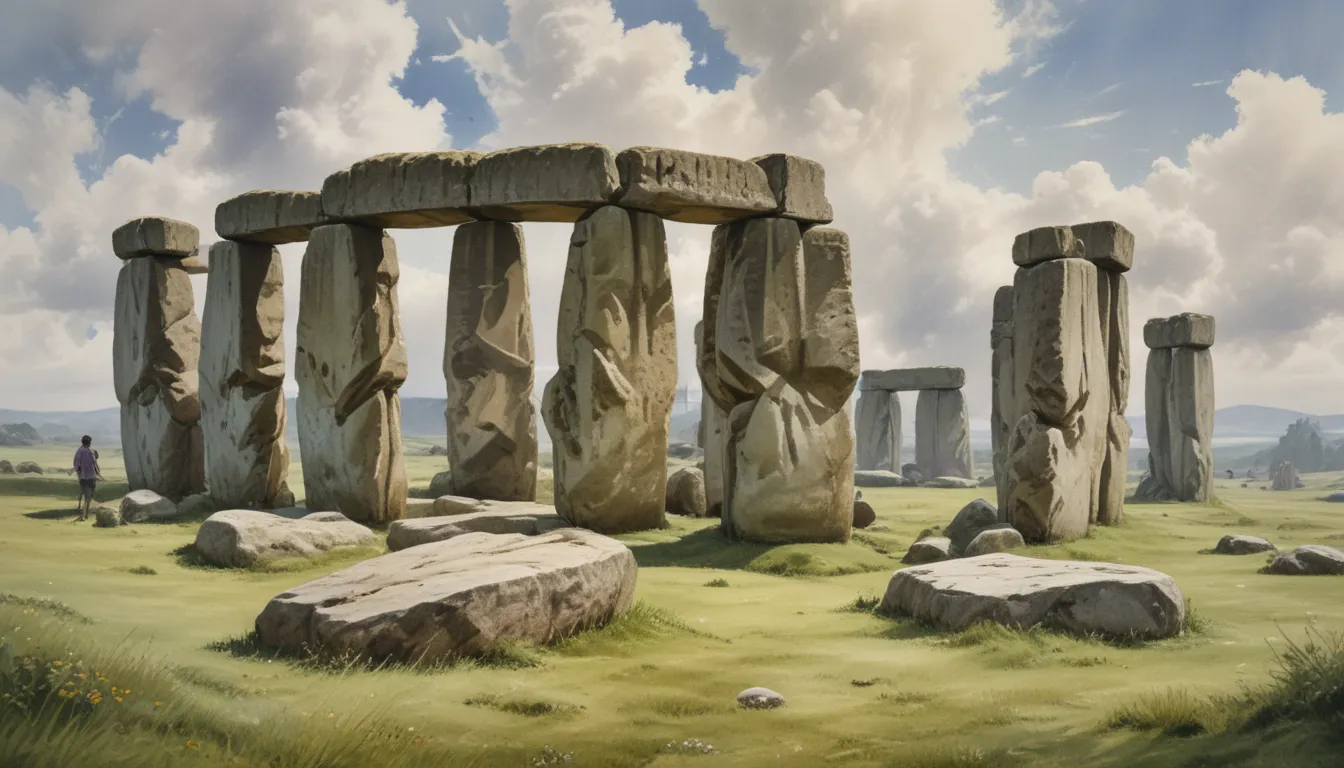The images in our articles are for illustrative purposes only and may not exactly match the content. They are intended to capture your interest and complement the text, not to replace it.
In the heart of England’s countryside lies one of the world’s most enigmatic historical landmarks – Stonehenge. This ancient wonder has captivated the curiosity of scientists, experts, and visitors alike for centuries. Despite the passage of time, the secrets of Stonehenge continue to puzzle and intrigue us. Let’s delve into the mystique of this enigmatic monument and unravel the fascinating facts that have been unearthed through dedicated research and exploration.
Unearthing the Origins: Stonehenge’s Prehistoric Beginnings
Stonehenge’s story dates back to 8000 BC, where wooden markers were first placed on the land surrounding the site. These markers, believed to have symbolic significance, paved the way for the monumental structure we see today. Archaeologists have meticulously investigated the indents left by these wooden markers, shedding light on the ritualistic and ceremonial practices of the ancient Britons.
The wooden markers hinted at an intricate east-west alignment, possibly linked to a prehistoric lunar calendar marking celestial events like solstices and equinoxes. This alignment underscores the ritual significance of Stonehenge even in its earliest days, reflecting the profound connection between the ancient Britons and the cosmos.
Unveiling Stonehenge’s Evolution: From Stonehenge I to III
As Stonehenge took shape over the centuries, it evolved through distinct stages marked by significant advancements in its construction. Stonehenge I, with its earth bank, ditch, and wooden markers, laid the foundation for later developments. The Aubrey Holes, a ring of pits surrounding Stonehenge I, suggested a deeper complexity to its purpose, potentially housing more wooden markers or even stone pillars.
Stonehenge II remains shrouded in mystery, with scant evidence pointing to wooden structures and cremated human remains. This phase hinted at the site’s transformation into a crematorium, further deepening the enigmatic nature of Stonehenge’s rituals and practices.
With Stonehenge III- the landmark’s iconic standing stones were finally introduced, solidifying its mesmerizing silhouette. The massive stones, believed to have originated from the Preseli Hills in Wales, posed a monumental challenge in transportation, sparking speculation on ancient engineering marvels. The intricate assembly of Stonehenge’s stones, including the Altar Stone and Heel Stone, highlighted the precision and craftsmanship of its builders.
Rituals and Symbolism: Unraveling Stonehenge’s Spiritual Significance
Throughout its evolution, Stonehenge served as a hub of spiritual and ceremonial activities, reflecting the beliefs and practices of its builders. Sacrifices dating back to Stonehenge III-2, including horse remains from distant lands, showcased the site’s role in religious festivals and rituals. The wooden circle near the Avon River, strategically aligned with the rising sun’s light, underscored the interconnectedness between the land of the living and the land of the dead.
Archaeologists speculate on the symbolic journey from the wooden circle to Stonehenge, symbolizing a transition from life to death. This ritualistic procession, coupled with the intricate carvings and symbols adorning Stonehenge’s stones, hinted at a complex web of beliefs and traditions woven into the fabric of this ancient monument.
Stonehenge’s Legacy: From Ancient Wonder to Modern Marvel
Stonehenge’s enduring legacy transcends centuries, resonating with modern-day visitors and scholars alike. Its designation as a World Heritage Site by UNESCO in 1986 underscored its universal significance and historical value. Despite myths linking Stonehenge to King Arthur or its modern associations with religious practices, the true essence of this enigmatic monument lies in its enigmatic past and enduring mysteries.
As visitors flock to Stonehenge each year, marveling at its towering stones and intricate formations, they are reminded of the timeless allure of this ancient wonder. While restrictions limit physical interaction with the stones, the vibrant history and spiritual essence of Stonehenge continue to captivate imaginations and spark curiosity.
In conclusion, Stonehenge stands as a testament to human ingenuity, spirituality, and perseverance. Its intricate construction, celestial alignments, and ritualistic significance have solidified its place as a beacon of ancient wisdom and wonder. As we continue to unravel the mysteries of Stonehenge, one thing remains clear – the enigmatic allure of this ancient monument will continue to inspire and fascinate generations to come.






